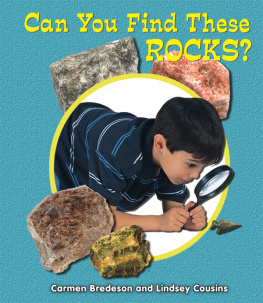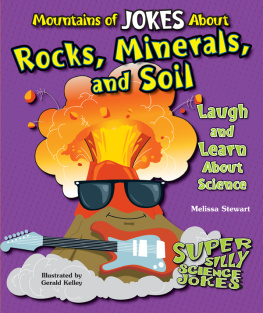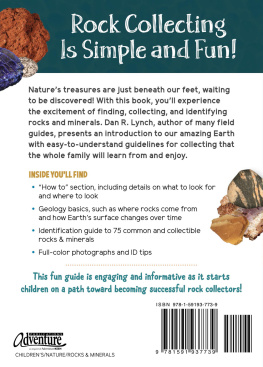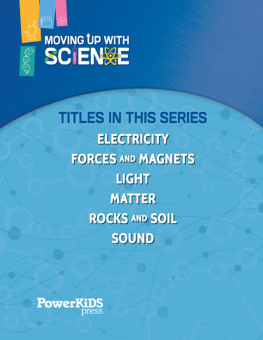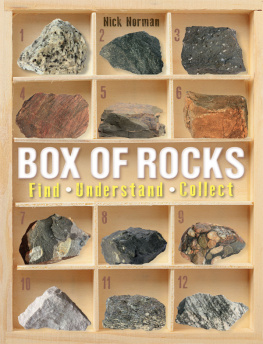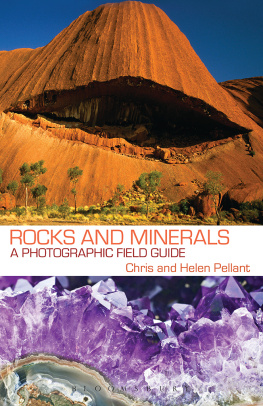Table of Contents
Guide

natgeokids.com/
superreaders

https://lccn.loc.gov/
2019055270
https://lccn.loc
.gov/2019055271

25 Cool Facts About
Rocks and Gems
25 More Facts About
Rocks and Gems
Rocks and Gems
Facts Roundup

A piece of rock has to
be at least .16 inch wide
in order to be called
a pebble.
The mineral cobalt got its name
from the German word kobold ,
a mischievous goblin said to
live in mines.
Archaeologists in Texas, U.S.A., found a 1,500- year- old piece of
fossilized human poop that contained the bones of a rattlesnake.
Powdered
aluminum is a
main ingredient
in rocket fuel.
When sand is mixed with other
ingredients and heated above
2400 degrees Fahrenheit, it
melts and turns into glass.
Some people scrub
and clean their skin
with the volcanic
rock pumice.
British settlers in Ontario,
Canada, called one rock
puddingstone because it
reminded them of a dessert.
Diamond is the
hardest natural
material on the
planet.
Soapstone gets
its name from
its greasy, or
soapy, feel.
The mineral cinnabar has
sometimes been called
dragons blood because
of its deep red color.

When lightning strikes sand, the
sand sometimes melts, forming
hollow, glass- lined tubes called
fulgurites (FUL- gyer- ites).
Oil can be
extracted
from the
rock shale.
At the 2019 Oscars, pop
star Lady Gaga wore a
$30 million yellow
diamond necklace.
The valuable gold in Fort Knox
was transported there in 1937 on
a heavily guarded nine- car train.
Stardust containing minerals
rich in iron and nickel
regularly falls to Earth.
Freezing weather can
break apart rocks.
Prehistoric peoples made axe- heads from the
mineral jade to use at special ceremonies.
The medieval healer
Hildegard von Bingen
believed that licking a
sapphire would make
a person smarter.
An average American uses
about 40,000 pounds of
minerals every year, including
pounds of salt and 28
pounds of aluminum.
Not all rocks are
hard clay is soft
because its made up
of tiny bits of rock
clinging together!
Ancient Egyptians said the
gem tourmaline passed
through a rainbow, giving it
the many colors it comes in.
Volcanic rocks like trachyte
(TRAK- ite) are so hard that
the ancient Romans built
roads with them.
Mineral crystals
can look like ferns
or like the spokes
on a bicycle.
The mineral
mica gives
some makeup
its shimmer.
The mineral ulexite (YOO
lek- site) is called television
stone images or words placed
underneath the clear mineral
seem to appear on its surface.

Rocks and minerals can be found
throughout our worldand EVEN IN SPACE!
Our
planet contains
OVER 5,000
known
minerals.

Rocks and minerals
bubble up from
volcanoes. They sit on
the ocean floor. They
even float through the
air! But what are they, exactly?
Minerals are solids that form
in nature. Each mineral is made up of its
own mix of chemical elements. And it always
forms in an exact crystal structure.
Rocks are made of a
mixture of minerals.
They can also contain
bits of other rocks or
fossilized plants or
animals. Rocks can be
as tiny as a grain of sand
or as huge as a boulder.
Some metals such as
copper, silver, and gold
are minerals, too. They can
exist on their own or be
mixed with other minerals.
Rocks from
other planets
sometimes SLAM
INTO EARTH in
the form of
meteorites.

People started using rocks to make tools
as far back as TWO MILLION YEARS AGO.
During the Stone Age, people
made axes out of flint. But
early humans also used rocks and minerals
in other ways. Ancient Egyptians used the
green mineral malachite as eye makeup.
And in ancient Assyria and Babylonia,
rocks like lapis lazuli were thought to protect
against spirits that caused illness.

The Navajo
people in North
America have been
mining and using
turquoise since AT
LEAST B.C.
Rocks and minerals are everywhere in
our lives today, too. Slate is used for roofing.
Talc makes the powdery coating on
chewing gum. Humans even have to
eat a mineral salt to survive!
The
mineral
silver is used in
MEDICAL BANDAGES
to prevent
infection.

Some of the giant rocks of Stonehenge weigh about
50 tons eachthats AS MUCH AS 12 HIPPOS!
Prehistoric people built enormous rock
structures that still stand today. For centuries,
scientists have wondered how they moved
the rocks.
Stonehenge was built in southern England
about 5,000 years ago. Scientists think the
builders dragged some of the rocks on
wooden sleds from miles away.

In ancient Egypt, builders
used giant limestone and
granite blocks to build the
pyramids at Giza. Experts believe
the stones were carried down the
Nile River on boats. Then
workers dragged the stones
to the building site.
The Egyptian
pyramid builders
used SLEDS, RAMPS,
AND WET SAND to move
the huge stone
blocks.
Englands Silbury Hill is
the worlds largest ancient
mound, a grassy hill built
by humans. Its FEET
HIGH and made of
500,000 TONS
OF CHALK.

Nature also creates incredible
formations from rocks and




